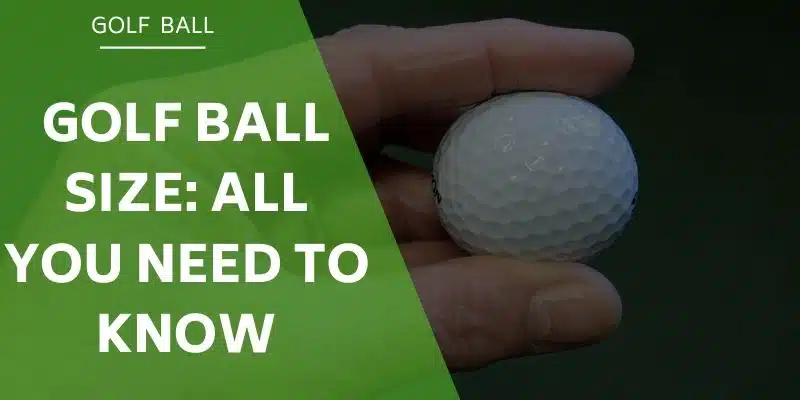While many golfers focus on their drivers, irons, and perhaps putters they often forget the importance of wedges.
If you look closely at the game you will see that the vast majority of golfers have incredible potential to easily reduce their strokes with better wedge play.
Sure, all aspects of the game are important and contribute towards your score, good or bad. Your play around the green, however, is the one area that is critical to work on and it will show in your score. Having the right wedge for the job is the first step.
Quick Answer: A Gap Wedge and an Approach Wedge are the same club. It is useful for good control of shorter shots near the green.
Is There a Difference Between a Gap Wedge and An Approach Wedge?
Most golfers believe the answer is no. It comes down to semantics or marketing speak. Some manufacturers choose to call them gap wedges while others call them approach wedges.
Essentially, they are the same thing. It might be easier for many golfers to simply call the wedge by the loft degree instead of the name given to it.
So What Is A Gap Wedge Or Approach Wedge?
The gap or approach wedge is designed to fit into the gap between the modern pitching wedge and the sand wedge hitting distance. They will normally have a loft of about 50 to 54 degrees and a full swing should take the average golfer 90 to 110 yards.
This will prevent you from having to choke down on the club or reduce your swing. The result, once you are familiar with the gap wedge, will be greater consistency and accuracy in that distance range.
Why Is There A Need For A Gap Wedge?
Just as golfers are extremely competitive, the club manufacturers are equally competitive, if not more so. They are all fighting for a larger slice of golf equipment pie. A lot of money, time and effort goes into research and development.
One thing most players want is greater distance and this is something equipment makers have focused on.
As a result of this, many clubs have changed and evolved over the years. In an effort to increase distance, the loft has been reduced on most irons. The basic theory is that, when hit correctly, less loft means greater distance.
While this was done to irons and the pitching wedge it did not affect the sand wedge. In other words, the modern pitching wedge will go a lot further than one from 10 or 20 years ago.
The sand wedge has remained the same so the distance has not changed. A sand wedge is designed for a specific purpose, bunker play.
While it is still used for shorter chips around the green, it is the reason the loft has remained the same. This resulted in a significant distance gap between the new pitching wedges and the sand wedge.
Understanding The Various Wedges
To understand the gap or approach wedge better, it is important to understand the various wedge options available. Most golfers are familiar with the pitching wedge and the sand wedge but there are a few other options. Let’s look at each one.
Pitching Wedge
The pitching wedge is used for distances of roughly 110 to 125 yards and will generally have a loft of between 44 to 49 degrees. It can be used for shorter shots is you do not take a full swing but it takes practice to get the distance consistent.
You want to get to know your own swing as well as your pitching wedge in order to make you approach sots more accurate. This will make for easier putting and fewer strokes.
As we mentioned above, modern pitching wedges have a lower loft then they did in the past and hit a lot further.
Sand Wedge
The sand wedge is designed to get you out of those dreaded sand traps or bunkers around the green. This is very intimidating for many golfers and takes practice as well as the right equipment. Many golfers question whether they actually need a sand wedge at all.
It is also used for shorter approach shots of about 80 to 100 yards and typically has a loft of 54 to 58 degrees.
Again, you need to get to know your sand wedge and how for you can hit it. It can also be played at less than full strength. What makes it effective in soft sand is the high bounce angle.
This is also effective in longer grass but is not suitable on hard ground or compacted sand. It is important to remember this.
Playing a sand wedge or any high bounce wedge off a hard surface generally results in the club bouncing up too quickly and causes you to hit the ball too high.
Lob Wedge
One of the newer options is the lob wedge that is designed for closer approach shots near the green. It is normally used for distances of 60 to 70 yards and it has a loft of around 59 to 63 degrees.
While it may help some beginners it is generally used by mid to low handicappers that have a good awareness of the distance they hit the other wedges and have decent consistency.
The lob wedge has a higher spin that the above options which gives you greater control on these shorter shots. It allows you to still play a full swing on closer approach shots and takes much of the guesswork out of the shot, once you know what you are doing with it.
They are generally purchased as an add-on to your existing set of clubs.
The Gap Wedge
The gap wedge has been described above. It came about after the pitching wedge decreased in loft, while the sand wedge remained the same.
This created the “gap” that the gap or approach wedge fills so well. It is an invaluable club once you are aware of your average distance with other wedge options.
It is much easier to get the right distance at a full swing. The gap wedge will allow you to do that if you are within 90 to 100 yards of the green. This will mean more consistency and accuracy. The average golfer should be able to save a few putts with a gap wedge and shave a few strokes off each round.
For more on the gap wedge and how to use it, check out this video:
Putting them all together
What is important is that you have the right tools for the job and you know how to use them. You might want to have a few wedges in your bag but ensure you know them and your average distance with each one. You want to have a good spread of lofts irrespective of the actual name of the wedge.
Also remember that any additional wedge you carry might mean sacrificing another club such as a driver, fairway wood or hybrid. The rules dictate that you may not carry more than 14 clubs.
Buying A Gap Wedge
Once you re comfortable with your pitching and sand wedge and understand your average distance, you might want to look at a gap or approach wedge. Give some thought to bounce and ensure you understand the basics of what wedge to use according to the circumstances.
Spend some time practicing with the gap wedge in order to be clear on the distance you will hill hit it. Once you know how to use your gap wedge it should get you close to the pin without falling short or overshooting.
Final Thoughts
Having a wedge that you can use for distances between your average pitching wedge distance and your sand wedge distance is very useful. It is way easier to hit consistently at full strength and the gap wedge will, for that range, allow you to do that.
Get to understand your wedges and how they work for you. By starting out with too many may just lead to confusion. Once you understand them you can start to experiment with a range of lofts to give you an advantage in your game.
Other Related Articles
- Do You Really Need a Sand Wedge?
- How Long Will Your Clubs Last and When To Replace Them
- What Is The Cost To Regrip Golf Clubs
- What is an AW Golf Club, What Does It Do & When To Use One
Nick is the founder of GolfSpan and an avid golfer. He's not quite a pro but has over 15 years of experience playing and coaching golfers worldwide. His mission is to bring the golfing community a better experience when it comes to choosing the right golf gear and finding the right setup for your game.






